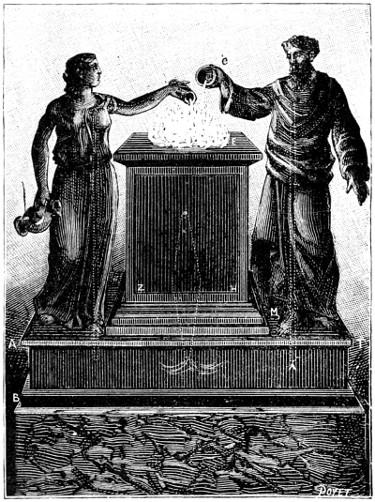Imagine you’re in an ancient temple, dimly lit by rays of sunlight peaking in. A worshipper lights a fire on the altar, and steps back. A statue beside the altar begins to move! It pours libations to the god for whom the temple is built. A door behind the altar opens of it’s own accord, and the statue of that god appears.
But behind the mystique was the ingenuity of inventors, not the miracles of the gods.
Inventor Hero of Alexandria (10–70 A.D.) described in “Pneumatics” how such devices worked. The statue stood on a pedestal connected to the altar by a tube. The tube extended from the altar, through the statue, and into a cup held by the statue. Water was poured into the pedestal through a hole that was then corked up.

Marvelous altar, pictured in the book "Magic, Stage Illusions and Scientific Diversions Including Trick Photography."





